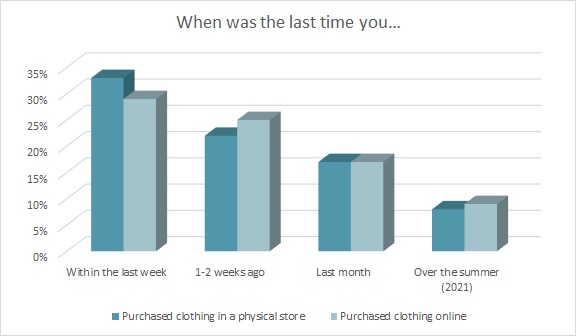A handful of pre-pandemic years ago, Target announced it was going to remodel its stores, add dozens of small-format locations and put endless aisle technology in the hands of its store associates. Apparently, the announcement went over like a lead balloon, seeing as brick-and-mortar retail was supposedly on its way out.
The combination of skilled store associates and the ability to leverage automation technology allows for a more personalized, targeted and efficient shopping experience for the customer, while also optimizing the use of store associate’s valuable time – ultimately, to the benefit of retailers.”
Oscar Sachs
CEO, Salesfloor
“We said we’re going to use our stores as fulfillment hubs and activate 1900 fulfillment centers across the country,” Target’s Brian Cornell, CEO, recently recalled during a keynote session at the 2022 NRF Big Show in New York. “Well, I was sitting in that room and it was a pretty cold reaction. But those investments in our team, in our stores and in our fulfillment model — things like pick up in-store, curbside pickup and having a Shipt Shopper come to your home — were really important during the pandemic. And I think they will be sticking as we go forward.”
Software developer Adobe states 8 of 10 B2B companies say omnichannel is critical to their future success. But, like many a relationship, it can be complicated.
“Your customer experience can easily become fragmented and inconsistent. And when that happens, customers hesitate to buy,” the company states in a recently released eBook. “They wonder if they can get a better deal online, in store, or through a different distributor. To succeed, you need a fully integrated customer experience that’s clear, consistent and greater than the sum of its parts.”
Even though COVID-19 continues, apparel shoppers have been venturing back to physical stores. Yet the pandemic made them much more comfortable with buying clothes online, as well. To wit, nearly three-quarters of consumers (72 percent) have purchased clothes in a brick-and-mortar store within the last month, according to Cotton Incorporated’s 2021 Coronavirus Response Consumer Survey, Wave 9, December 8, 2021. At the same time, 71 percent have purchased clothes online. And 68 percent have used their phones to browse apparel online while they were shopping for clothes in a physical store.

Further, while 40 percent of consumers say they have a stronger preference now than before the pandemic for buying clothes in a physical store, 36 percent say they now prefer buying their apparel online, according to the Coronavirus Response Survey (Wave 9).
To appeal to today’s multi-channel consumers, Adobe advises retailers to audit their products across all their channels for consistency in content description and imagery. The company also says retailers need to be sure all their channels, including Amazon Business, are connected to the same e-commerce platform and inventory management system. Additionally, stores have to make sure their pricing, payment and shipping options are consistent so customers get the same deal no matter where they shop. And not only do retailers need to allow for buying online and picking up in-store, they need to provide in-store tablets or kiosks where shoppers or store sales reps can search for products that may not be available locally.
In the next few months, 58 percent of consumers plan to spend more on clothing, with 60 percent of those consumers planning to shop online for that clothing, according to the Coronavirus Response Survey (Wave 9).
Going forward, nearly half of all consumers (48 percent) expect apparel retailers to offer online ordering with curbside or in-store pickup, according to the Coronavirus Response Survey (Wave 9). Another 27 percent expect stores to offer same-day delivery.
Salesfloor, a digital platform that connects web shoppers with store associates, suggests retailers showcase their products, prices and proximity to local customers who are conducting product searches online. Stores should display their location, hours, directions, and inventory availability (including aisle location) nearest the searcher’s home or office. They should also publicize in-store events and promotions across digital channels and invite preferred customers personally.
Online shoppers should also be encouraged to collect their purchases in-store with fulfillment promotions, Salesfloor suggests. And associates should reach out to customers with hyper-targeted offers based on individual and specific purchase history. The company also suggests stores stream live, in-store product demonstrations, celebrity appearances or special sales events.
Salesfloor recently acquired Automat, a conversational artificial intelligence (AI) platform that powers guided shopping experiences, product recommendations and personalization for brands. The move brings virtual shopping, clienteling, and sales automation for retailers to the company’s abilities.
“Through this exciting acquisition, we are able to provide a mix of human store associates and AI-assisted capabilities to optimize the shopping experience,” said Oscar Sachs, CEO of Salesfloor. “The combination of skilled store associates and the ability to leverage automation technology allows for a more personalized, targeted and efficient shopping experience for the customer, while also optimizing the use of store associate’s valuable time – ultimately, to the benefit of retailers.”
Target’s Cornell said when his team put their strategy together back in 2017, they had no idea what they would be facing a few years later when COVID hit.
“But those investments paid back in a big way during the pandemic,” he said. ” I think as we go forward there’s going to be that great balance between consumers who still love physically being at a store yet want all the ease, convenience and safety that comes with just driving up and receiving that order or having something put on their doorstep. We’ve seen it’s not ‘either/ or’ — it’s an ‘and.’ Even in the pandemic, consumers have gravitated to both physical stores and taking advantage of digital and — in many cases — same day fulfillment options, to meet their needs. I think that’s here to stay.”
